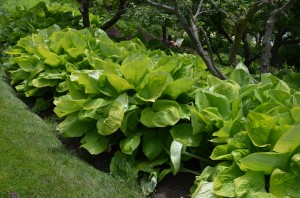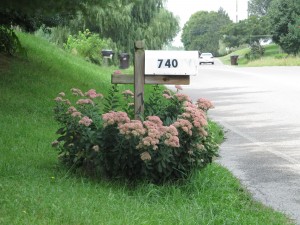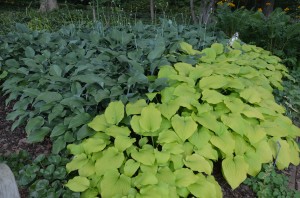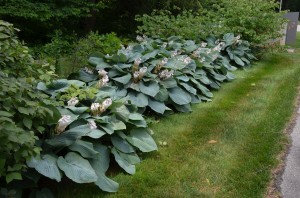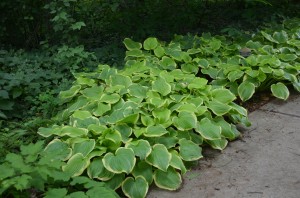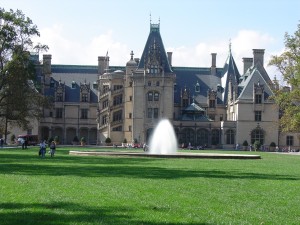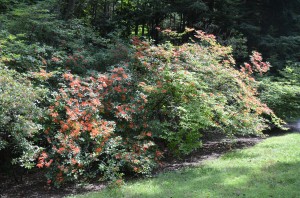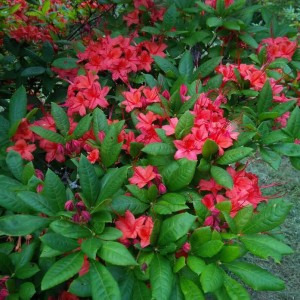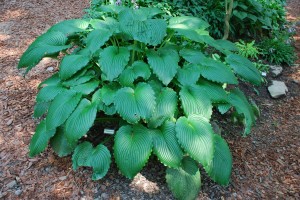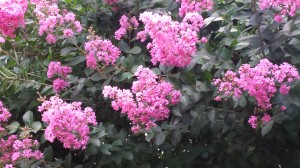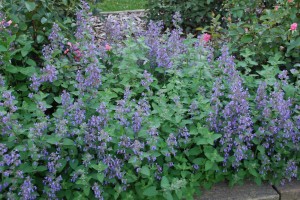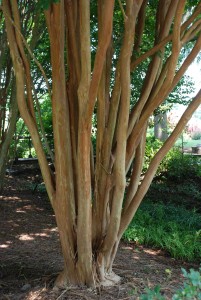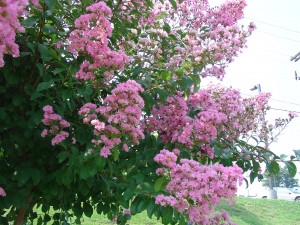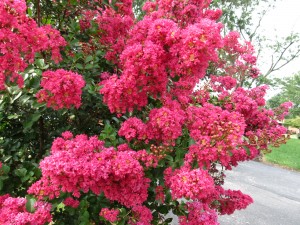The “Giant” class of hostas is aptly named. Cultivars in this class are novelties. Their enormous leaves and plant sizes (height and spread) definitely will make a bold statement in any garden.
To attain their glorious best in plant majesty and leaf size, each cultivar must have a compost-rich, moist, well-drained soil with pH between 5.5 and 7.5. Moderate shade to dappled sunlight is the rule. Morning sun (where tolerable) may help to intensify the leaf color(s) of some. Intense afternoon sun is usually harmful, particularly on powdery blue leaf types. Clumps should be regularly fertilized and irrigated according to soil moisture needs. Five of the most popular cultivars are listed below:
Sum and Substance- 3 feet tall and 6 feet wide
Komodo Dragon- 2 1/2 feet tall and 7 feet wide
Empress Wu- 4 feet tall and 7 feet wide
Titanic- 2 1/2 feet tall and 6 feet wide
Blue Mammoth- 3 feet tall and 5 feet wide
‘Sum and Substance’… struts glossy heavily-textured green-gold leaves; near-white lilac flowers stand 6 or more inches above the foliage in late July. Foliage turns brighter gold in full morning sun in USDA hardiness zone 6. (2004 Hosta of the Year).
‘Komoda Dragon’…forms a mound of dark green, heavily rippled leaves. Four feet tall floral scapes of lavender arise in midsummer.
‘Empress Wu’…this hybrid of ‘Big John’ features heavy-textured, quilted, heart-shaped leaves that are topped by lavender flowers in mid-summer.
‘Titanic’…displays thick, glossy, prominently veined, green-centered leaves edged by a wide chartreuse margin. Lavender flowers appear from late July into early August. It is a sport of H. ‘Sum and Substance’.
‘Blue Mammoth’…features very large chalky-blue leaves that are heavily quilted and proven slug resistance. White flowers emerge in July.
These hosta giants standout as nice single specimen by themselves or plantd behind smaller growing shade-loving plants in your garden.

